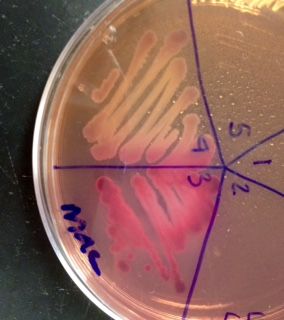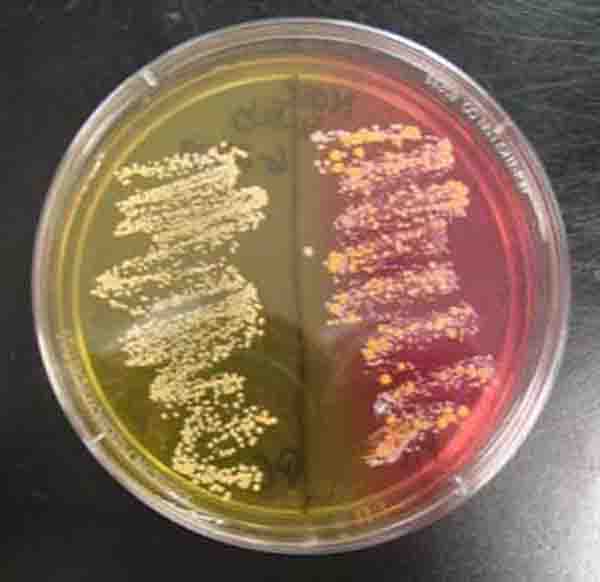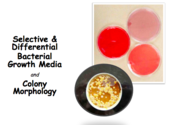 | ||||
Types of Growth Media to Culture Bacteria - P2
SPO VIRTUAL CLASSROOMS
Differential Bacterial Growth Media
PAGE 2 < Back to Page 1
Page last updated: 8/2016
FREE Printable
Study Aid, from Tami. You'll brain will thank me!
MacConkey's Agar growing Gram-negative bacteria. Salmonella, which doesn't ferment lactose, is growing colorlessly in section #4. E. coli, which does ferment lactose, is growing pink in section #3.
When bacteria growing on MAC ferment lactose (metabolize it for food), they generate acidic waste products that trigger the pH sensitive dye to turn the bacteria pink.
So, when grown on MAC, colonies of Gram-negative, lactose fermenting bacteria are pink. The intensity of the pink color corresponds to how good the bacteria are at eating lactose. Colonies of Gram-negative non-lactose fermenting bacteria grow in colorless colonies.
SPO VIDEO:
How to Interpret
MacConkey's Agar (MAC)
Bacterial Growth Medium
Mannitol Salt Agar is another specialized differential media that contains food (mannitol, a sugar alcohol) and a pH sensitive dye. When the bacteria growing on MSA ferment mannitol, the medium changes from its original pink color to a bright highlighter yellow.
Mannitol Salt Agar grows halophilic (salt-loving) bacteria. Pathogenic Staph is growing on left (yellow side) and normal flora Staph growing on right (pink).
Differential culture media are formulated to display a color change when the bacteria growing metabolize a certain ingredient.
MacConkey’s Agar (MAC), in addition to being selective (only growing Gram-negative bacteria), contains the sugar lactose and a pH sensitive dye.
You have free access to a large collection of materials used in two college-level introductory microbiology courses (8-week & 16-week). The Virtual Microbiology Classroom provides a wide range of free educational resources including PowerPoint Lectures, Study Guides, Review Questions and Practice Test Questions.
 | ||||||




